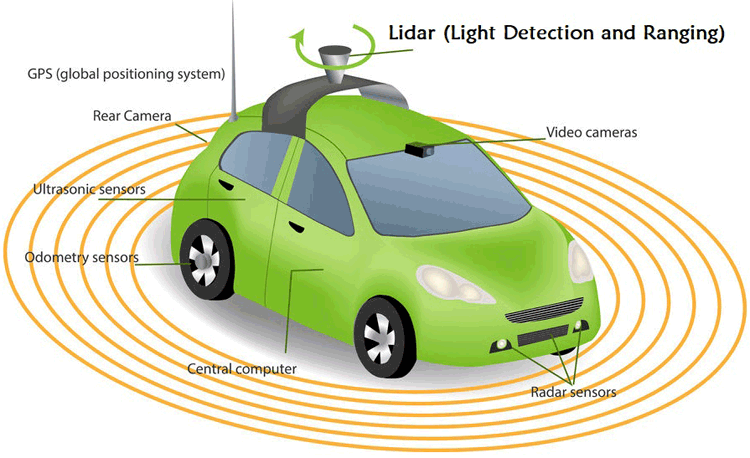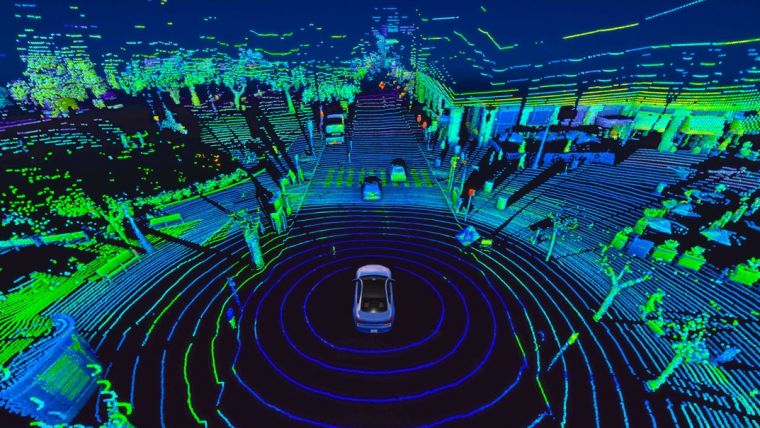With each passing day, vehicles are becoming smarter and better. With companies like Tesla giving a glimpse into what the future might look like, newer technologies are being continuously developed to equip the future. One such revolutionary tech is the LiDAR aka the Light Detection and Ranging system. Here is everything you need to know about LiDAR and its use in modern-day vehicles.
What is LiDAR?

An acronym for Light Detection and Ranging, LiDAR is a technology that makes use of light sensors to calculate the distance between the sensor and its target objects. Therefore, LiDAR is a remote sensing technology that uses high-grade lasers and sensors to measure and map the elevation including the ground, trees, buildings and other surroundings, thereby creating a map.
Usually, a LiDAR system uses ultraviolet or near-infrared sources to sense and map objects. The light energy emitted by a LiDAR system is referred to as a Pulse, while the light reflected from the target is called a Return.
Checkout: How Car Manufacturers Ensure Pedestrian Safety Through Design
How does LiDAR work in modern-day vehicles?

Now that we know that a LiDAR system works by sending a pulse of light, and then analyzing its return to map surroundings, let us now understand in detail, how the LiDAR system comprehends data.
To begin with, the Light Detection and Ranging sensors measure the time taken by a pulse to return back to the sensor. Depending upon the time, it then calculates what is known as the variable distance to the objects. Like the Sonar system uses sound waves to map things, and a Radar uses radio waves, LiDAR as the name suggest uses light waves sent out by a laser. With millions of return processed each second, a LiDAR unit makes a 3D map of the surroundings that becomes the eyes of an autonomous vehicle.
While conventional cameras use visible light, a Light Detection and Ranging System works on near infra-red light, making them effective even against rain, fog, or even some textures. Moreover, since LiDAR technology generates its own light pulses, they do not depend on ambient light. With sophisticated components onboard, a LiDAR-based system can comprehend data in a better manner, creating a comprehensive map of the real world, helping vehicle’s cruise through areas conveniently.
How important are Light Detection and Ranging systems for modern-day vehicles?

With the growth in self-driving and autonomous vehicles, Light Detection and Ranging systems are gaining traction. Acting as the eyes for autonomous vehicle, LiDAR enables a vehicle, to “see-through” its surroundings, and identify real-time data.
Even though it is still being thoroughly studied, Light Detection and Ranging Technology has already reached areas such as California, Texas, Arizona, Michigan etc. and even other countries such as China and Russia. As a mapping technology, Light Detection and Ranging technology is the torchbearer to the future of autonomous vehicles around the globe. In India too, there have been constant R&D in the field of LiDAR, with hopes to see the tech in motion in the near future.
So this was all about Light Detection and Ranging technology and its use in modern-day vehicles. Stay pinned to the GoMechanic blog for everything automotive.
Also Read: Hyundai Alcazar vs Tata Safari | The Epic Comparison

Checkout: 5 Indian YouTubers And Their Choice Of Cars [Part 3]





